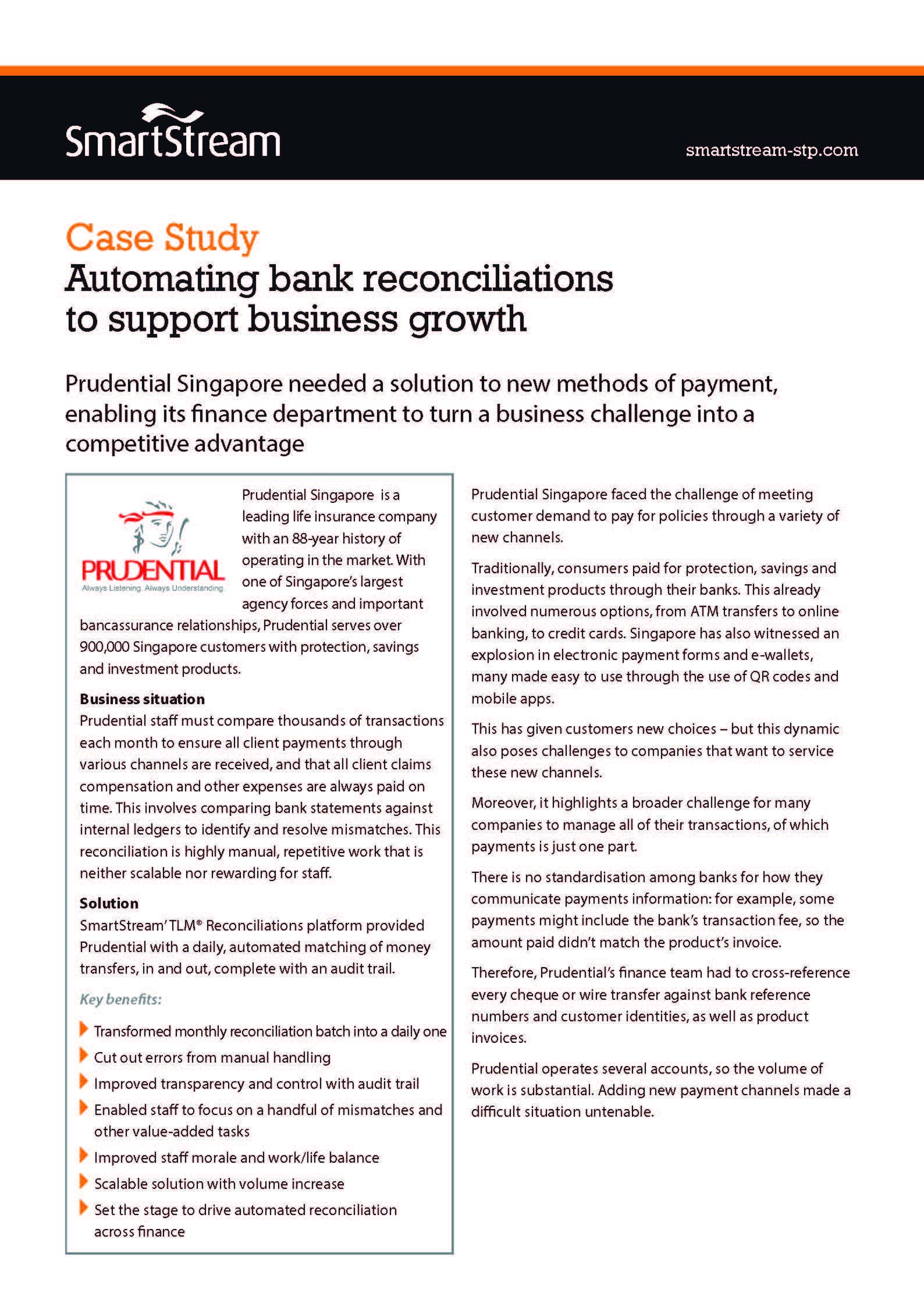

IN ASSOCIATION WITH SMARTSTREAM
Hard times can force innovative solutions. In these challenging days, with the world held in the grip of a pandemic, the immediate needs of individuals, communities and entire industries are fuelling the creative processes that will, ultimately, reshape the world in which we live. As businesses adjust to employees being locked down in their homes, as customers’ habits change in response to the restrictions on their movement and activities, as people realise both the advantages and disadvantages of what was once their normal life, industry will be forced to function differently both during the pandemic and in its aftermath.
The financial services industry is no exception. In fact, it may be among those industries that sees the most fundamental change. Banks that were once hesitant about the process of digitalisation – despite understanding its many benefits in a world that increasingly demands fast and seamless service – may now be forced to embrace innovative technologies that can pre-empt future challenges rather than react to them.
Global software and managed services provider SmartStream, which has a rapidly growing client base in the financial services sector, has innovation at its heart and the driving force behind it is Andreas Burner, chief innovation officer.
“There has been a sudden change for banks,” says Burner, who is also managing director of the SmartStream Innovation Lab. “In the past few years, we have used AI and the cloud to improve workflows, but we are seeing a complete change in scenarios. Workflows must now support working from home, and banks need the systems to do that effectively.
“We are being asked for systems with easy onboarding and quick configuration, and cloud may be the only way forward as you cannot install a new on-premise system right now.”
A hive of creativity
In terms of AI and cloud-based services, SmartStream has been a pioneer. While understanding the industry’s reticence, it has pushed ahead to make both technologies fundamental elements in its suite of products and services. Unlike some competitors, however, it has not used either AI or the cloud meaninglessly, but only applied them in ways that deliver tangible benefits and better outcomes for its clients. This focus on pushing ahead with technologies before they are commonplace allows SmartStream to incorporate them into mature, market-tested solutions when the industry catches up.
Continuing this drive to build the systems that banks will need in the future is a fundamental part of the mission of the company’s Innovation Lab. Based in Vienna, Austria, the Innovation Lab brings together mathematicians, applied data scientists and computer scientists to evaluate and deploy AI, machine-learning, cloud and blockchain technology in ways that will improve efficiency and drive down cost for financial institutions. These specialists work in close collaboration with clients to understand and overcome the challenges they face.
“Our Innovation Lab has been working on AI and cloud technology for three years, so we can deliver what the market needs,” says Burner. “Software on the cloud is available in minutes, and we use simple AI software that can adapt workflows quickly.
“As chief innovation officer, I am responsible for bringing innovation to our products and to our customers. Our goal is to make financial workflows more efficient. At the same time, we want to make financial software as simple to use as a weather app or a navigation app on a smartphone. Software in the financial services industry is usually too complicated, but we want to let you ask a simple question and get a simple response.”
The purpose of the Innovation Lab is to create software that is as straightforward and as intelligent as possible. This is made possible largely through AI and cloud infrastructure. The lab has been instrumental in bringing an exhaustive AI platform to support its systems, including a real-time cash and liquidity management solution to capture transactions across an entire network; AIR, a reconciliation system that can understand any data feed, and configure itself automatically to give responses in seconds; exceptions management; digital payments and much more.
“With the cloud, users can subscribe and immediately access our services,” Burner explains. “We are as busy as ever in the Innovation Lab. There is a new version of AIR every month to help clients handle more complex scenarios. Clients in the UK, Asia and around the world are giving us feedback that we incorporate into AIR, so that it can work in all scenarios.
“Now, we are working on another new AI technology that will be launched later this year. The current situation changes the direction of innovation in the short term. Covid-19 is interesting because no one knows what the world will look like in a year. How will we work? What will the new normal look like? These are the questions we have to ask ourselves.”
The future is now
Judging by the requests from clients in the first week of lockdown, it is clear that two areas will certainly be of prime importance to banks as they reshape their processes – cash and liquidity planning on one hand, reconciliation on the other.
“Cash and liquidity planning have become very complex now,” observes Burner. “The rule-based systems that banks have implemented during the past ten years have all raised exceptions as the market has behaved differently to expectations. Our cash and liquidity management solution incorporates AI, so that it can adapt automatically as the market changes. It can deal with the very complex situation that we are seeing now.”
The solution is based on machine learning rather than on rules derived from previous patterns of market behaviour. As a result, exceptions are only raised when payments are actually late rather than because of irregular conditions in the market.
“In reconciliation, people need more touchpoints and security measures,” Burner continues. “They need this in order to check that credit card payments are behaving as they should, for example, so our system now has more points at which workflow is checked to ensure that reconciliation does happen properly.
“We are able to offer our clients something that gives them the power to adapt. We are also seeing demand for cloud-based systems and managed services increase as the needs of the industry change. It will take time for banks to adjust. Usually, adoption takes 18 months, but now the industry wants something that can be ready in one week. That can only be achieved with cloud-based and intelligent software that can be configured quickly.”
One reason that AIR, as with SmartStream’s other AI-based solutions, can be implemented quickly is the fact that it is a white box AI system. Black box systems make decisions and execute actions, whereas white box systems leave the final decisions to the user.
“With AIR, the AI extracts the rules from the data sets but the user must accept those rules and press ‘Go’,” says Burner. “We only focus on white box AI and we have seen phenomenal use cases for it. It is not risky, it just helps users to create the right workflow. It is transparent to the user, and regulators will accept it on that basis.”
Mapping out the future
With the future of the industry uncertain, it is to SmartStream’s benefit that its Innovation Lab can map out possible futures and prepare for them.
“What will the world be like one year from now?” asks Burner. “We don’t know for sure, but that is the question that always drives my thinking. I know that there will not be robots at local bank branches serving customers – that I can say for sure. More services will be digitised and more people will be using online banking, including older people.
“Change is being driven by customers, who are moving more of their banking online. There will be fewer paper-based workflow problems. We’ll see more digitisation with safer and more secure software products, and more straight-through processing.”
The future Burner describes is one that the industry has been moving towards steadily, but now the brakes are off. The industry needs agility as well as resilience, flexibility and security. All of this is achievable, but only if banks embrace AI, cloud and other technologies. This is not for their own sake but so they can deliver clear, tangible and transformative outcomes.
Automating bank reconciliations to support business growth
We are all familiar with AI to some degree, but the financial services sector has been a little slower to find meaningful applications for AI to boost the industry.
When applied to reconciliation processes, banks can get return on investment (ROI) by focussing on where staff is having to deal with the greatest volume of data. AI allow banks to hand over many of the time-consuming data-management tasks to systems powered by machine learning algorithms that are safely hosted in the cloud.
This whitepaper demonstrates how SmartStream is utilising AI to change reconciliation forever.

By clicking the “Submit” button above, you accept the Terms & Conditions and acknowledge that your data will be used as described in the SmartStream Privacy Policy
We will also collect and use the information you provide for carefully considered and specific purposes, where we believe we have a legitimate interest in doing so, for example to send you communications about similar products and services we offer. We will always give you an option to opt out of any future communications from us. You can find out more about our legitimate interest activity in our privacy policy here. ‘We’ includes Verdict Media Limited and other GlobalData brands as detailed here.


